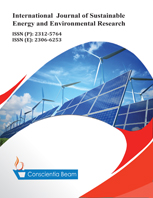Solar Power Analysis Under Varying Environmental Condition Using Solar Emulator
DOI:
https://doi.org/10.18488/journal.13.2021.102.101.113Abstract
The current situation of fast depleting non-renewable resources and excessive damage done to mother earth due to severe mechanization and industrialization has resulted in alarming rate of pollutions. The one-word answer for it is that we should start harnessing renewable resources of energy. Tapping sun’s energy is a wonderful and apt answer to the current situation of energy requirement. World over this technology is worked upon to make use of sun’s energy easy to be converted into usable energy form i.e. electricity. The research work being carried on in varied fields however to mention one such aspect of solar panels is irradiance -receiving and capturing powers. Along with the irradiance, the area of a panel which is exposed to sun, the daytime and location are some of the factors affecting the amount of power generated using solar power as generating source. From research point of view, to analyze the effect of variation of these parameters, it is difficult to get the analysis data using solar panels and hence now a day’s emulator is preferred and used for research purposes. This paper focuses on the basics of emulator, its structure, functioning, effect of various parameter variations on the analysis of the generated power and other related benefits using emulator. The paper also presents the effect of partial shading on the maximum power generated and the efficiency hence obtained. The performance analysis is done on an Experimental set up fabricated in Research lab.

